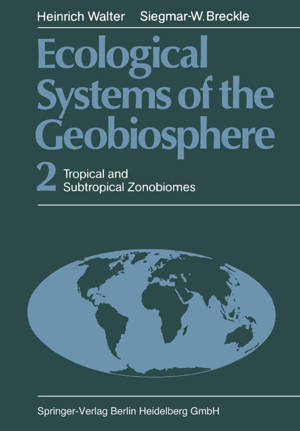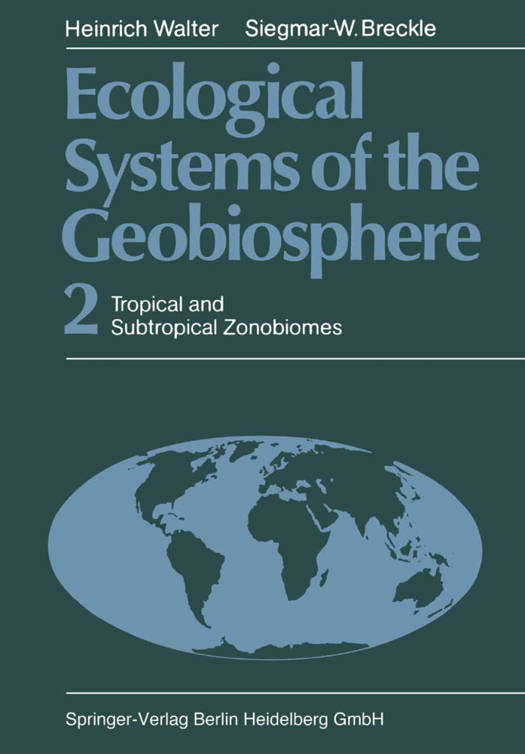
- Afhalen na 1 uur in een winkel met voorraad
- Gratis thuislevering in België vanaf € 30
- Ruim aanbod met 7 miljoen producten
- Afhalen na 1 uur in een winkel met voorraad
- Gratis thuislevering in België vanaf € 30
- Ruim aanbod met 7 miljoen producten
Zoeken
Ecological Systems of the Geobiosphere
2 Tropical and Subtropical Zonobiomes
Heinrich Walter, Siegmar W Breckle
Paperback | Engels
€ 110,95
+ 221 punten
Uitvoering
Omschrijving
In Volume 1 of this four-volume series, ecological problems of a general nature were discussed from a global point of view. Familiarity with this is essential for a full understanding of the more specialized treatment in this and subsequent volumes, for no similar approach is to be found in other ecological handbooks for beginners. This present volume deals in detail with the special ecological relation- ships of the tropical and subtropical zonobiomes I to III. Most ecologists proceed from the basis of their experience in the temperate zones of the northern hemisphere. As a result, many ecological writings show a certain one-sidedness and there is a danger that generalizations made will not be broadly applicable. To avoid this, particular emphasis is laid, in this vol- urne, on the special ecological features and the characteristics of the trop- ical and subtropical regions. More specifically, we deal not only with the relationship of the euclimatope to zonal soils and zonal vegetation, but also pay attention to azonal conditions shown in pedobiomes and in the altitudinal belts of mountains, the orobiomes. In this and the subsequent volumes the same simple scheme is followed in treating each zonobiome: 1. climate; 2. soils; 3. producers; 4. consum- ers; 5. decomposers; 6. ecosystems; 7. sub division into biomes; 8. oro- biomes; 9. pedobiomes and 10. zonoecotones. Where it has appeared expedient, however, we have occasionally deviated from this scheme (see Deserts D, F, G and H).
Specificaties
Betrokkenen
- Auteur(s):
- Vertaler(s):
- Uitgeverij:
Inhoud
- Aantal bladzijden:
- 465
- Taal:
- Engels
Eigenschappen
- Productcode (EAN):
- 9783662068144
- Verschijningsdatum:
- 12/08/2013
- Uitvoering:
- Paperback
- Formaat:
- Trade paperback (VS)
- Afmetingen:
- 170 mm x 244 mm
- Gewicht:
- 762 g

Alleen bij Standaard Boekhandel
+ 221 punten op je klantenkaart van Standaard Boekhandel
Beoordelingen
We publiceren alleen reviews die voldoen aan de voorwaarden voor reviews. Bekijk onze voorwaarden voor reviews.








